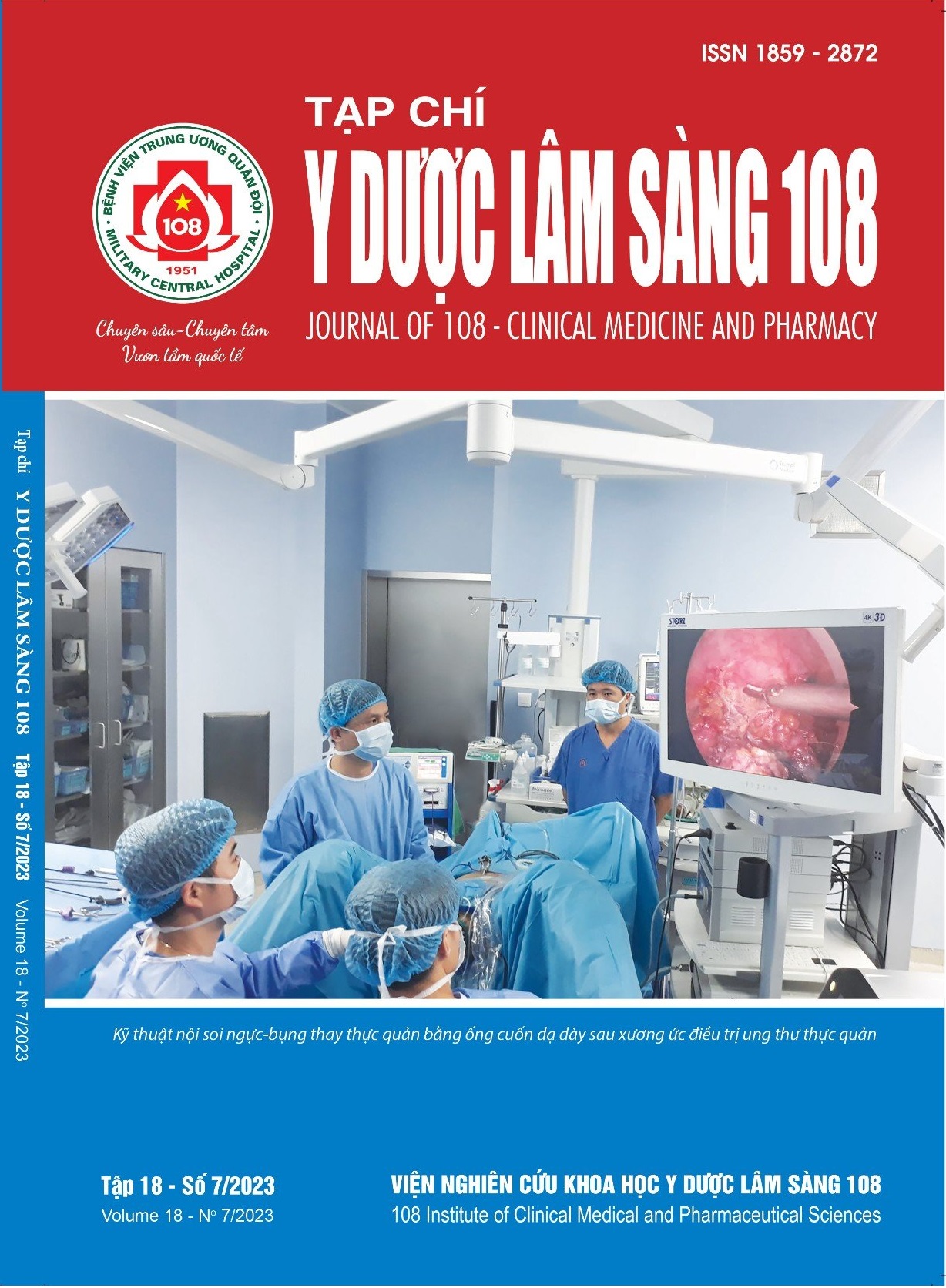Attitude and practice of nursing care for peripheral intravenous catheters affect the rate of peripheral phlebitis in a military hospital (02/2023 - 4/2023)
Main Article Content
Keywords
Abstract
Objective: To evaluate the rate of phlebitis in patients with peripheral venous catheterization, the association between adherence to the technical procedure for catheterization, and the attitude of nurses in compliance with preventive measures bacteremia with the incidence of phlebitis at a military medical hospital in Vietnam. Subject and method: The study was a cross-sectional descriptive design. Observations were done on 32 nurses practicing infusion techniques, and intravenous line care on 32 patients with peripheral venous catheters from February to April 2023. Result and conclusion: Patients with level 1 phlebitis accounted for the highest percentage (50%), 28.13% of patients had level 2, and 18.75% of cases had no abnormal signs. There was an association between the proportion of patients with phlebitis and the retention time of the catheter (p=0.0076). There was an association between the scores of the attitude scale, the nursing practice of peripheral venous line care, and the seniority of work (p=0.045).
Article Details
References
2. Lv L and Zhang J (2020) The incidence and risk of infusion phlebitis with peripheral intravenous catheters: A meta-analysis. The journal of vascular access 21(3): 342-349.
3. Apisarnthanarak A, Singh N, Weber DJ (2017) Peripheral venous catheter–related adverse events in a tropical country. infection control & hospital epidemiology 38(10): 1258-1259.
4. Anabela de Sousa Salgueiro Oliveira et al (2019) Nurses' peripheral intravenous catheter-related practices: A descriptive study. Revista de Enfermagem Referencia 4(21): 111-120.
5. Ray-Barruel G, Polit DF, Murfield JE, Rickard CM (2014) Infusion phlebitis assessment measures: A systematic review. Journal of Evaluation in Clinical Practice 20(2): 191-202.
6. Bakan AB and Arli SK (2019) Development of the peripheral and central venous catheter‐related bloodstream infection prevention knowledge and attitudes scale. Nursing in Critical Care.
7. Aburayya A, Al Marzouqib A, Alawadhic D, Abdoulid F and Taryame M (2020) An empirical investigation of the effect of employees’ customer orientation on customer loyalty through the mediating role of customer satisfaction and service quality. 10(10): 2147-2158.
8. Nickel B (2020) Hiding in plain sight: Peripheral intravenous catheter infections. Critical Care Nurse Journal 40(5): 57-66.
9. Pumpo D (2013) Infusion-related complications, in body fluid management: From physiology to therapy, F.E. Agrò, Editor. Springer Milan: Milano: 205-214.
10. Neopane A (2013) Peripheral venous thrombophlebitis risk and the role of hand washing. Nepal Journal of Medical Sciences 2(1): 26-29.
 ISSN: 1859 - 2872
ISSN: 1859 - 2872
